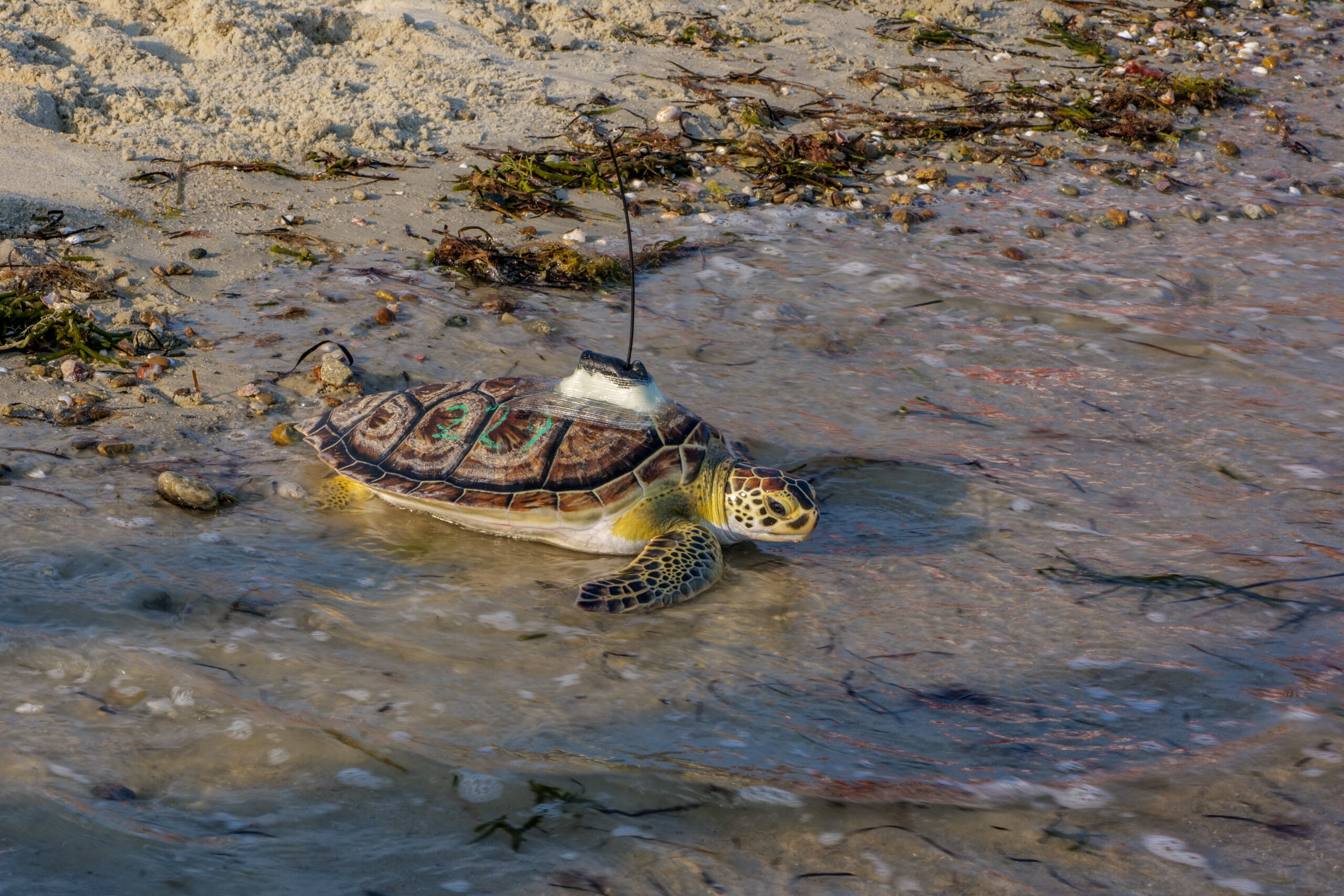
BOSTON, MASS. (Sept. 27, 2023) – The New England Aquarium is tracking the movements of 14 rehabilitated sea turtles that were satellite tagged in 2023, the most turtles the conservation organization has ever tagged in a single release year.
**PHOTOS AVAILABLE HERE WITH CREDIT TO NEW ENGLAND AQUARIUM**
Each year, the Aquarium rehabilitates hundreds of sick and injured sea turtles, and several are tracked to collect data on where the turtles swim, feed, and travel, as well as gather information about post-release survivorship. This past year, the team tagged eight critically endangered Kemp’s ridleys and six green sea turtles. The public can follow the journey of several of the tagged turtles through a live map on the Aquarium’s website.
“Monitoring the turtles after their rehabilitation is critical, since their stories don’t end at release. Satellite tags tell us if they survive and demonstrate typical behavior for their species. This helps us measure the true conservation impact of our conservation work. We also know almost nothing about habitat-use of most sea turtles in New England, especially Kemp’s ridleys and greens, so our data is filling that gap,” said Dr. Kara Dodge, a research scientist in the Anderson Cabot Center for Ocean Life at the New England Aquarium.
The transmitted data has shown that nine of the turtles have remained in Massachusetts waters, while one swam to Rhode Island and four have entered Long Island Sound. In addition to the group of 14, Aquarium scientists are also tracking two rehabilitated loggerhead turtles that were tagged and released in Summer 2022. One of these turtles, named “Cayenne,” returned to Nantucket Sound this past August and has been feeding near West Dennis Beach, the same location where it was released following rehabilitative care at the Aquarium’s Sea Turtle Hospital in Quincy, MA.
“Our team cares for hundreds of cold-stunned sea turtles every year, and we hope we have set them up for success in their natural habitat when they are released. Satellite tagging data gives us a glimpse into their lives after leaving our Sea Turtle Hospital and helps confirm for us that our rehabilitation efforts are working,” said Adam Kennedy, Director of Rescue and Rehabilitation at the Aquarium.
“With this new round of tags, we are also focusing on how much time turtles spend at the surface. This is important for understanding vessel strike risk, as well as how often these turtles can be seen by aerial or boat-based observers. Spoiler alert: the greens and Kemp’s ridleys spend almost no time at the surface, which explains why they’re rarely seen before hundreds strand on Cape Cod beaches in November and December,” Dodge said.
Dr. Dodge also studies the movements of leatherback turtles and is tracking three that she and her team tagged in Puerto Rico in May 2023. In less than two months, two of those turtles traveled over 2,100 miles to Canada and are currently feeding on jellyfish in the Gulf of St. Lawrence. This is the second time Dr. Dodge has tracked two of these leatherbacks, “Noemi Dos” and “Carmen Taina,” who followed similar routes from Puerto Rico to Canada in 2021 and then returned to the nesting beaches of Puerto Rico this past May.
Information from satellite tags is used to improve sea turtle welfare, conservation, and protection. Tag data can also help researchers and conservationists better understand nesting patterns, migratory behavior, and habitat use. The combined weight of a tag and accompanying attachment materials is 5% or less of a turtle’s body mass, and typically less than 1%. Aquarium scientists expect most of the turtles to shed their satellite tags within about one year.
MEDIA CONTACT: Pam Bechtold Snyder, psnyder@neaq.org; 617-686-5068
